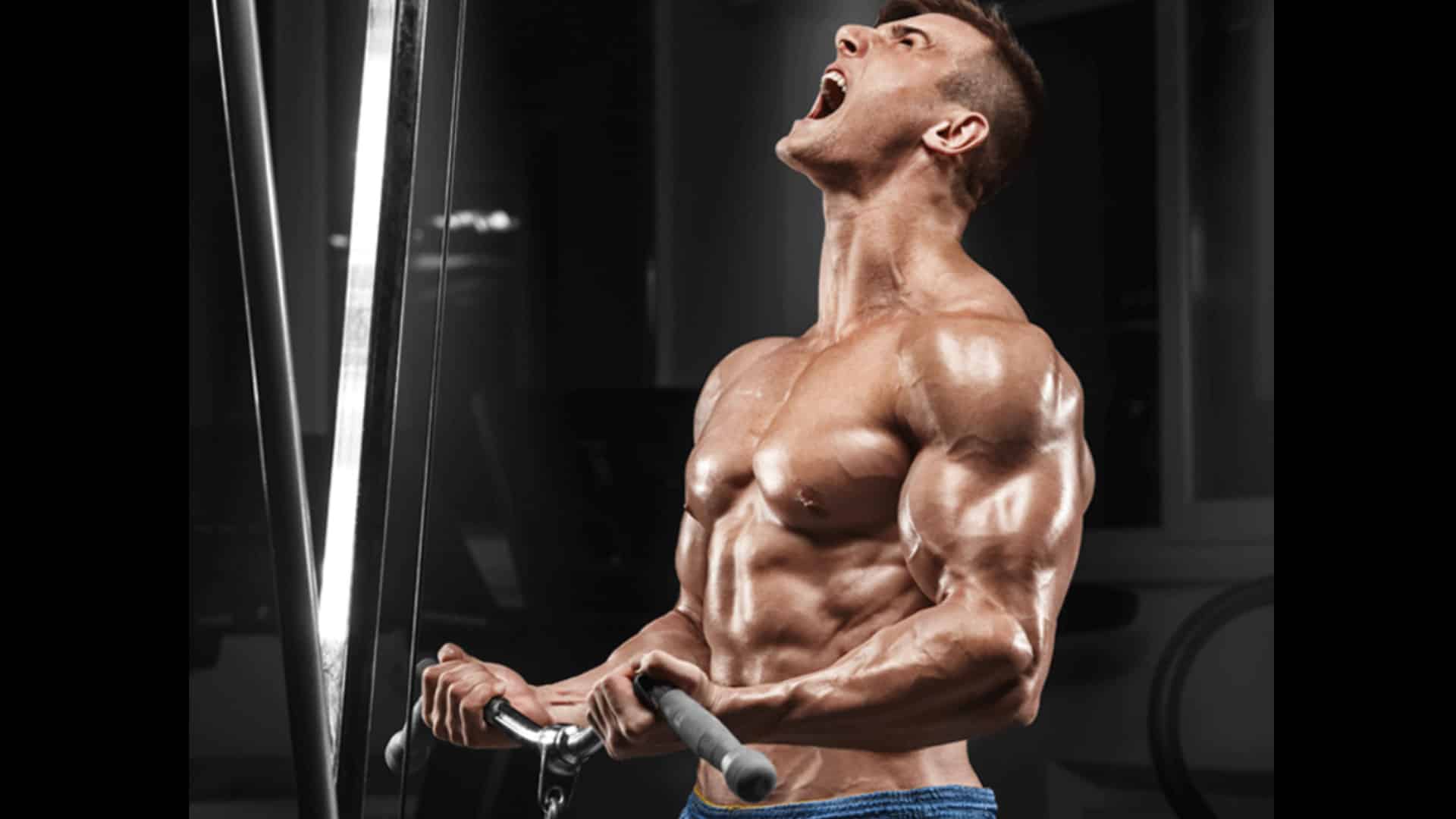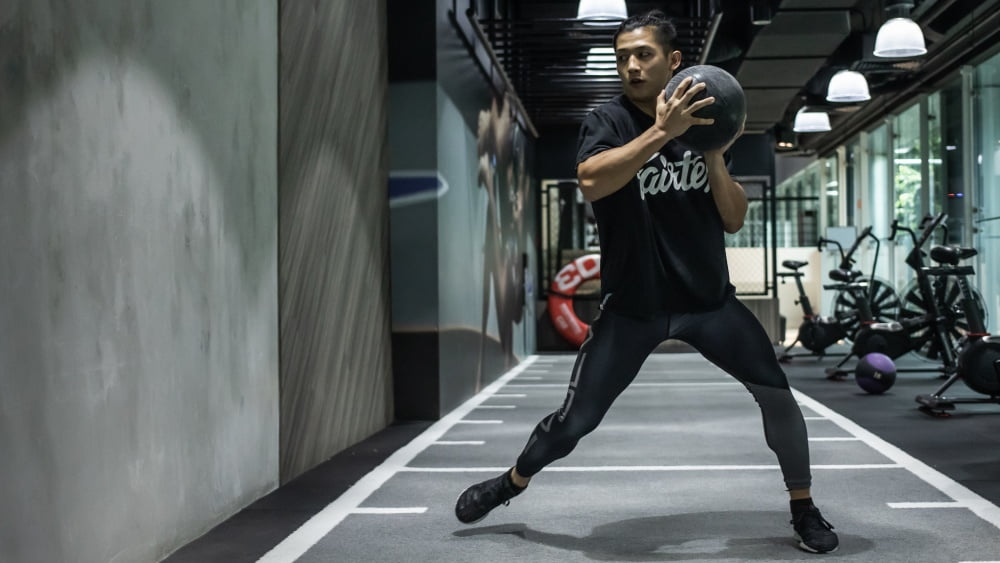Building strong and well-defined biceps is a common goal for many fitness enthusiasts, but achieving this requires more than just basic exercises. This article provides a comprehensive guide on effective biceps training, focusing on anatomy, essential exercises, nutritional strategies, and advanced techniques to ensure continuous progress. By understanding the biceps’ structure and function, you can tailor your workouts to maximize growth and strength while incorporating proper nutrition to support your efforts.
Whether you’re a beginner or looking to enhance your existing routine, this guide offers practical insights and actionable strategies that address common challenges in biceps development. With the right approach, you can achieve significant results and elevate your overall fitness journey.
In this article you will find:
Understanding Biceps Anatomy for Effective Training
To unlock the potential of your biceps and achieve significant gains, it is essential to understand the anatomy of this muscle group. The biceps brachii, commonly referred to as the biceps, is a two-headed muscle located in the upper arm. It plays a crucial role in various upper body movements, including flexion and supination of the forearm. By gaining insights into its structure and function, you can tailor your workout routines to maximize biceps development effectively.
Anatomy of the Biceps
The biceps consist of two heads: the long head and the short head. Each head originates from different locations and contributes to the muscle’s overall shape and function.
- Long Head: This head originates from the supraglenoid tubercle of the scapula and runs along the outer side of the arm. It is primarily responsible for the peak of the biceps muscle and is engaged during exercises that require overhead lifting.
- Short Head: The short head originates from the coracoid process of the scapula and is located on the inner side of the arm. This head contributes to the overall thickness of the biceps and is activated during movements that involve pulling or curling.
Functions of the Biceps
The biceps have several key functions that are critical to upper body strength and performance:
- Flexion: The primary function of the biceps is to flex the elbow joint. This action is crucial in exercises such as bicep curls and pull-ups.
- Supination: The biceps also play a vital role in supinating the forearm, which is the action of rotating the palm upward. This function is important in movements like turning a doorknob or performing a bicep curl with a supinated grip.
- Stabilization: The biceps assist in stabilizing the shoulder joint during various activities, ensuring proper alignment and reducing the risk of injury.
Importance of Biceps Training
Understanding the anatomy and functions of the biceps can help you develop more effective training strategies. Here are some reasons why biceps training is crucial:
- Improved Aesthetics: Well-developed biceps contribute to a balanced and muscular upper body, enhancing overall physique.
- Enhanced Performance: Strong biceps improve performance in various sports and activities, from weightlifting to rock climbing.
- Injury Prevention: Strengthening the biceps can help stabilize the shoulder and elbow joints, reducing the risk of injuries during physical activities.
To further enhance your understanding of biceps anatomy and training, consider exploring resources such as Bodybuilding.com’s comprehensive guide on biceps anatomy and effective exercises. This knowledge will empower you to create targeted workout routines that not only build size but also improve overall strength and function.
With a solid grasp of biceps anatomy, you can now move on to essential exercises that maximize biceps growth, ensuring your training is as effective as possible.
Essential Exercises to Maximize Biceps Growth
Building impressive biceps requires a focused approach to training that incorporates a variety of exercises. Each exercise targets different aspects of the biceps, allowing for comprehensive development of size, strength, and definition. In this section, we will explore the most effective exercises for maximizing biceps growth, ensuring that you have a well-rounded routine to achieve your fitness goals.
1. Dumbbell Bicep Curls
The classic dumbbell bicep curl is a staple in any biceps training regimen. This exercise primarily targets the biceps brachii and is great for isolating the muscle.
- How to Perform: Stand with your feet shoulder-width apart, holding a dumbbell in each hand at arm’s length. Curl the weights while keeping your elbows close to your body, and squeeze at the top before lowering back down.
- Tips: Focus on a controlled motion and avoid swinging the weights. To increase difficulty, try alternating arms or using a supinated grip.
2. Hammer Curls
Hammer curls are an excellent variation that targets both the biceps and the brachialis, a muscle that lies beneath the biceps. This exercise helps increase the thickness of the upper arm.
- How to Perform: Stand with a dumbbell in each hand, palms facing each other. Curl the weights up while maintaining the neutral grip, and lower them slowly.
- Benefits: Hammer curls enhance grip strength and develop the outer portion of the biceps, contributing to a fuller appearance.
3. Barbell Curls
Barbell curls allow for heavier weightlifting, which can lead to greater muscle hypertrophy. This compound exercise engages both heads of the biceps effectively.
- How to Perform: Stand with a barbell at hip level, hands shoulder-width apart. Curl the barbell towards your chest while keeping your elbows stationary.
- Variations: Experiment with different grips, such as wide or narrow, to target different areas of the biceps.
4. Concentration Curls
Concentration curls are highly effective for isolating the biceps and enhancing peak development. This exercise is particularly useful for developing muscle control and technique.
- How to Perform: Sit on a bench with your legs spread. Hold a dumbbell in one hand, resting your elbow on the inside of your thigh. Curl the dumbbell up towards your shoulder, focusing on squeezing the biceps.
- Note: Perform this exercise slowly to maximize muscle tension and ensure proper form.
5. Preacher Curls
Preacher curls help eliminate momentum and isolate the biceps, providing a unique angle of resistance that encourages growth.
- How to Perform: Sit at a preacher bench with a barbell or dumbbell. Rest your arms on the bench and curl the weight towards your shoulders.
- Key Advantage: This position places continuous tension on the biceps, which is vital for muscle growth.
Integrating Exercises into Your Routine
To maximize biceps growth, it’s essential to integrate these exercises into a balanced workout routine. Here are some tips to consider:
- Frequency: Aim for 2-3 biceps-focused workouts per week, allowing for adequate recovery between sessions.
- Variety: Incorporate a mix of the exercises mentioned to target the biceps from different angles and prevent plateaus.
- Progressive Overload: Gradually increase the weight or repetitions as you become stronger to continuously challenge your muscles.
For further insights on effective biceps training and workout plans, consider checking out Men’s Health’s expert guide. This resource can help you refine your approach and achieve the biceps size you desire.
With these essential exercises in your arsenal, you are now ready to explore nutrition strategies that fuel biceps development, ensuring that your body has the resources it needs to grow and recover effectively.
Nutrition Strategies to Fuel Biceps Development
To achieve optimal biceps growth, it’s essential to complement your training regimen with the right nutrition strategies. The food you consume plays a pivotal role in muscle recovery, growth, and overall performance. In this section, we will explore key nutritional components that support biceps development and provide actionable strategies to enhance your diet for maximum results.
The Role of Protein in Muscle Growth
Protein is the building block of muscle tissue, making it a critical component for anyone looking to increase biceps size and strength. Consuming adequate amounts of high-quality protein helps repair muscle fibers damaged during workouts, promoting recovery and growth.
- Recommended Intake: Aim for approximately 1.6 to 2.2 grams of protein per kilogram of body weight per day, depending on your training intensity.
- Sources of Protein: Include lean meats (chicken, turkey, beef), fish, eggs, dairy products, legumes, and plant-based proteins like quinoa and tofu.
Carbohydrates: The Energy Source
Carbohydrates are essential for providing the energy needed to fuel intense workouts. They replenish glycogen stores in your muscles, allowing for sustained performance and effective recovery.
- Complex Carbohydrates: Focus on whole grains (brown rice, oats, quinoa), fruits, and vegetables. These sources provide sustained energy and essential nutrients.
- Timing: Consume carbohydrates before and after workouts to enhance energy levels and aid in recovery.
Healthy Fats for Hormonal Balance
Incorporating healthy fats into your diet is vital for maintaining hormonal balance, which is crucial for muscle growth and recovery. Fats help in the absorption of fat-soluble vitamins and provide a concentrated source of energy.
- Sources of Healthy Fats: Include avocados, nuts, seeds, olive oil, and fatty fish (salmon, mackerel).
- Recommended Intake: Aim for 20-35% of your total daily caloric intake from healthy fats.
Hydration: The Overlooked Essential
Staying hydrated is often underestimated in its importance for muscle growth and performance. Adequate hydration ensures optimal muscle function, aids in nutrient transport, and helps prevent fatigue during workouts.
- Daily Water Intake: Aim for at least 2-3 liters of water per day, adjusting based on your activity level and climate.
- Signs of Dehydration: Be aware of symptoms such as fatigue, dizziness, and decreased performance, which can indicate a need for increased fluid intake.
Supplements to Consider
While whole foods should form the foundation of your diet, certain supplements can enhance biceps development when used appropriately:
- Whey Protein: A convenient source of high-quality protein that supports muscle recovery post-workout.
- Creatine: Helps improve strength and increase muscle mass by enhancing energy production during high-intensity exercise.
- BCAAs: Branched-chain amino acids may help reduce muscle soreness and improve recovery times.
Before adding any supplements to your diet, consult with a healthcare professional or a registered dietitian to ensure they align with your individual needs and goals.
For more detailed insights into nutrition for muscle growth, consider visiting Healthline’s guide on muscle-building foods. This resource can provide you with additional strategies to enhance your diet and fuel your workouts effectively.
With a solid understanding of nutrition strategies to support your biceps development, you are now ready to explore advanced techniques that can further accelerate your progress and ensure continuous gains.
Incorporating Advanced Techniques for Continuous Progress
To achieve significant and sustained biceps growth, it is essential to incorporate advanced training techniques into your workout routine. These methods not only enhance the effectiveness of your exercises but also help to overcome plateaus, stimulate muscle fibers, and promote continuous progress. In this section, we will explore several advanced techniques that can elevate your biceps training and maximize your results.
1. Progressive Overload
Progressive overload is a fundamental principle in strength training that involves gradually increasing the weight, frequency, or intensity of your workouts. By consistently challenging your muscles, you promote growth and strength gains.
- How to Implement: Track your workouts and progressively increase the weights you lift or the number of repetitions you perform. Aim to add 5-10% more weight to your lifts every few weeks.
- Alternative Methods: You can also increase the number of sets, reduce rest time, or incorporate more challenging variations of exercises.
2. Supersets and Drop Sets
Supersets and drop sets are excellent techniques for increasing workout intensity and stimulating muscle growth.
- Supersets: This involves performing two exercises back-to-back with minimal rest in between. For example, you can pair dumbbell curls with hammer curls. This technique increases the time under tension for your muscles and can lead to greater hypertrophy.
- Drop Sets: After reaching failure on a particular exercise, immediately reduce the weight and continue performing repetitions until failure again. This method helps push your muscles beyond their usual limits, promoting growth.
3. Eccentric Training
Eccentric training focuses on the lengthening phase of a muscle contraction, which is where most muscle damage occurs. This technique can lead to increased muscle hypertrophy and strength.
- How to Execute: During bicep curls, take a slower approach on the lowering phase (eccentric) of the lift, taking 3-5 seconds to lower the weight. This increases time under tension and stimulates muscle fibers more effectively.
- Research Insights: Studies have shown that eccentric training can lead to greater muscle growth compared to concentric-only training, making it a valuable addition to your routine.
4. Periodization
Periodization is a systematic approach to training that involves cycling through different phases of intensity and volume to optimize performance and recovery.
- Types of Periodization: You can use linear periodization (gradually increasing intensity over time) or undulating periodization (varying intensity and volume within a week).
- Benefits: This approach helps prevent overtraining, allows for recovery, and can lead to consistent gains in strength and muscle size.
5. Mind-Muscle Connection
Developing a strong mind-muscle connection is crucial for maximizing biceps engagement during workouts. This technique involves focusing on the muscle you are working to enhance activation and effectiveness.
- How to Improve: During each repetition, concentrate on contracting the biceps and visualizing the muscle working. This can enhance muscle activation and lead to better results.
- Practice: Incorporate lighter weights to focus on form and connection before progressing to heavier lifts.
Utilizing Advanced Techniques in Your Routine
To effectively integrate these advanced techniques into your biceps training, consider the following:
- Training Split: Incorporate these methods into your existing training split, focusing on biceps-specific days or combining them with other upper body workouts.
- Monitor Progress: Keep a training journal to track your weights, reps, and techniques used. This will help you identify what works best for you.
- Stay Flexible: Be willing to adjust your routine based on your progress and how your body responds to different techniques.
For further exploration of advanced training strategies, you can check out Bodybuilding.com’s guide on advanced training techniques. This resource offers additional insights and methods to enhance your biceps workouts.
By incorporating these advanced techniques into your training regimen, you will be well-equipped to achieve continuous progress and reach your biceps development goals. To maximize biceps growth, it’s crucial to understand both the anatomy and functions of the biceps. The biceps brachii consists of two heads—the long head and the short head—each contributing to muscle size and strength. Effective training strategies include various exercises like dumbbell curls, hammer curls, and preacher curls, which target the biceps from different angles. Incorporating progressive overload, supersets, and eccentric training can further enhance muscle development.
Nutrition also plays a vital role in supporting biceps growth. Prioritize high-quality protein intake, complex carbohydrates for energy, and healthy fats for hormonal balance. Staying hydrated is essential for muscle function, while supplements like whey protein and creatine can aid recovery and performance. By combining targeted exercises with a well-rounded nutrition plan and advanced training techniques, you can achieve continuous progress in your biceps development.




